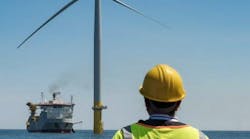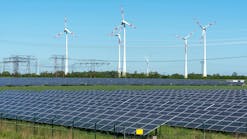The leaders of Dominion Energy on Nov. 5 said the expected cost of their 2.6 GW Coastal Virginia Offshore Wind project plan – the country’s largest of its kind – has climbed to $9.8 billion from their initial estimate of $8 billion.
Dominion more than two years ago announced its vision for the Coastal Virginia Offshore Wind project, which is expected to comprise about 180 turbines sited on 113,000 acres 27 miles from Virginia’s coast and be completed by late 2026. The company partnered with Danish company Ørsted to set up a two-turbine generator pilot that went into service in January at a cost of about $300 million. The projected cost increase for the full project isn’t a huge surprise” Earlier this year, Dominion executives said in their quarterly filing with the Securities and Exchange Commission that commodity inflation (particularly in steel) and detailed design work on the project’s onshore transmission elements were likely to drive higher overall investment estimates.
Something of a flipside to that: Improved turbine design – the company has contracted with Siemens Gamesa for the 800-foot turbines – and encouraging results from the pilot mean Coastal Virginia Offshore Wind is likely to have a higher capacity over its lifetime than first estimated. That, Chairman, President and CEO Bob Blue told analysts Nov. 5, means the vast project’s estimated levelized cost of energy hasn’t changed from $87/MWh.
“The customer bill impact is the same,” Blue said.
Dominion is forecasting that the net average cost of the project to a typical residential customer will be about $4 per month. The company expects the typical Dominion Energy Virginia bill to grow 2.1% per year from 2019 to 2035; that number averaged 0.7% from 2008 to 2020.
If approved by the Virginia State Corporation Commission, Dominion’s plan would generate enough energy to power up to 660,000 homes. The company expects its construction will generate 900 jobs and $143 million in annual economic benefits and that its operation will create 1,100 jobs and nearly $210 million in economic benefits annually.
See also: 'Is 30 GW of U.S. Offshore Win by 2030 Realistic?' from June


